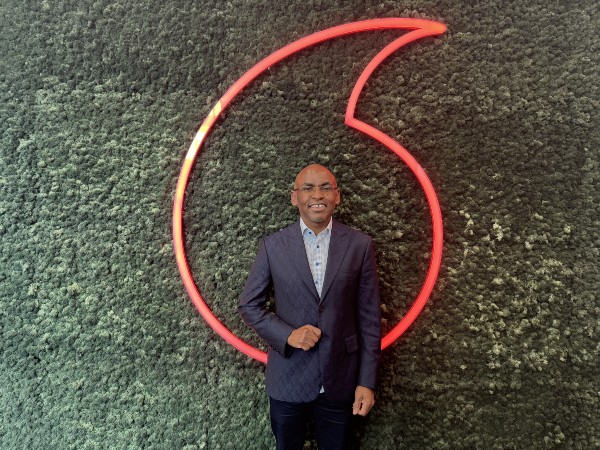Deploying a mobile network has never been cheap, but the scale of the intensive capital expenditure required is increasingly pushing smaller players to seek out alternative models for delivering connectivity.
Between deploying base stations, leasing fees, and rental fees for the land, owning network infrastructure is often prohibitively expensive for such operators, so it’s unsurprising that infrastructure sharing became a firmly established practice among them. Specialised firms have been operating leaseback models for years, Infrastructure as a Service models are increasingly widespread, and virtual RAN is fast gaining traction as an innovative means of providing connectivity over a partner’s network.
A notable example is South African operator Cell C, which entered the market with an MVNO-style model based on sharing infrastructure with incumbent players MTN and Vodacom, but has recently adopted what it describes as an outsourced network model. Cell C, along with its licences and spectrum, was taken over by Blue Label in early 2025 after several years of struggling financially.
The move appears to have refocused the operator’s management and strategy on its value proposition to the market. Cell C is now aiming to provide connectivity exclusively via a virtual radio access network (VRAN) handled via partnerships with other providers. The group’s CTO Schalk Visser said that this new model is scalable, sustainable, and enables seamless connectivity by allowing the operator to move away from managing physical network infrastructure towards VRAN for improved reach, quality and flexibility. Cell C’s Multi-Operator Core Network (MOCN) model allows the operator to provide customers with a reliable, high-quality network experience without the operational complexities of managing a nationwide tower estate.
“We now have access to over 28,000 towers nationwide, a footprint that allows us to deliver consistent, high-quality coverage across South Africa, including in areas where we previously had limited presence”, explains Visser. “It enables us to scale faster, focus our resources on digital transformation, and respond more effectively to changing consumer expectations.”
Using Multi-Operator Core Network (MOCN) technology and intelligent traffic steering - both executed through roaming partnerships - Cell C can leverage agreements with other network operators such as MTN and Vodacom to enhance its network coverage and performance, with the operator’s customers using its partners’ networks as if they were on its own physical infrastructure. MOCN provides a virtualised radio access network, meaning that Cell C doesn't own or operate the physical towers and infrastructure itself, although it does have its own core network, transmission, spectrum and billing systems. Visser claims that this allows Call C to compete on network quality while swapping capital expenditure for operational expenditure.
While virtual RAN is one of many approaches that MNOs and MVNOs are adopting to lower costs, Cell C’s model is noteworthy for its scale, says Sam Barker of Juniper Research – there is no other operator currently attempting to provide connectivity entirely through virtual RAN. While reducing capex requirements is a major motivating factor for many operators, the model has drawbacks: the more operators own, the more they control. Adopting a virtual RAN increases an operator’s reliance on partner providers to deliver the end service, but the VRAN provider still ultimately has the billing relationship with their customer, so it’s incumbent on them to ensure that their partners meet their Service Level Agreements (SLAs) to provide the promised service.
Even if this allows VRAN providers to dramatically reduce their capex, they’re relinquishing a significant amount of control. Barker notes that this could become an increasing issue with the introduction of the next generational standard – 6G standardisation is expected this year, with the first launches likely to be around 2030. RAN naturally plays a big role in generational shifts, but VRAN providers have no control over the timing of the launch – if they’re aiming to upgrade their network for 6G, they are reliant on partners so could fall behind competitors. While this may seem less pressing for operators in emerging markets, Barker observes that South Africa was quick to deploy 5G.
In terms of generations, 4G was sufficient for the majority of subscriber use cases, and while 5G offered a big upgrade in terms of speed and latency, there was no clear roadmap to monetising the new connections and securing a return on investment. This leaves operators questioning their motives to launch 6G – it’s not just about decreasing capex and shifting the spend to opex, they need to know where the additional revenue is coming from for 6G.
“The big question mark over 6G from a researcher’s point of view is: what are operators and carriers going to do to learn from that mistake?” says Barker. He cites the trends towards Infrastructure as a Service, network sharing, and virtual RAN as part of this, but notes that operators are in danger of becoming a connectivity pipe unless they start looking at connectivity from an enterprise/IoT perspective. 6G will be far more aligned with serving enterprises than mobile subscribers, and if operators such as Cell C are relying on other service providers for launching VRAN or just RAN in general, they will need to make sure they’re addressing this market.
Uptime, speed and latency are of more concern to enterprises than consumers, because when these metrics drop, it’s their customers – IoT users – who are impacted. If all of these connections use radio access networks that are not in fact managed by the operator, this could become an issue for VRAN providers such as Cell C, argues Barker – although he acknowledges that most operators will have some form of legal fallback or an SLA guaranteeing uptime. With operators increasingly reliant on the enterprise market for their revenue, they will need to strengthen their focus on KPIs for uptime and RAN reliability or risk deterring potential clients.
Visser counters that the shift to infrastructure sharing is positive for all players. Continuous investment in costly mobile network infrastructure is a capital-intensive exercise which offers diminishing returns for operators if not their networks are not run efficiently. Mobile operators first invest for coverage, then densification and capacity. During the densification phase, the investment cycle for the next generation of technology commences, resulting in the investment cycles beginning to overlap.
In many mature markets, there is a trend of two infrastructure players becoming established for investing heavily and continuously in their networks, while several other mobile operators leverage this infrastructure and compete based on the services they offer customers. Visser claims that this provides a better competitive environment because more than two players can offer products and services to customers and infrastructure players maximise the capacity available on their networks. One of the common risks of IaaS is service outages, but Visser argues that Cell C has mitigated this risk through the deployment of its dual MOCN strategy: if there is an outage on one network, the technology enables Cell C to switch customers onto partner networks.
Ultimately, the virtual RAN model relinquishes control but does offer adaptability – and Barker notes that this will be essential for operators as we transition towards more IP-based, software-defined networks. Visser posits that Cell C’s sustainable business model could be replicated by challenger players in emerging markets, who need to be leaner and more agile to offer affordable services without the traditional capex heavy model. If operators can capitalise on VRAN’s adaptability, it could position them well for positive growth.





























